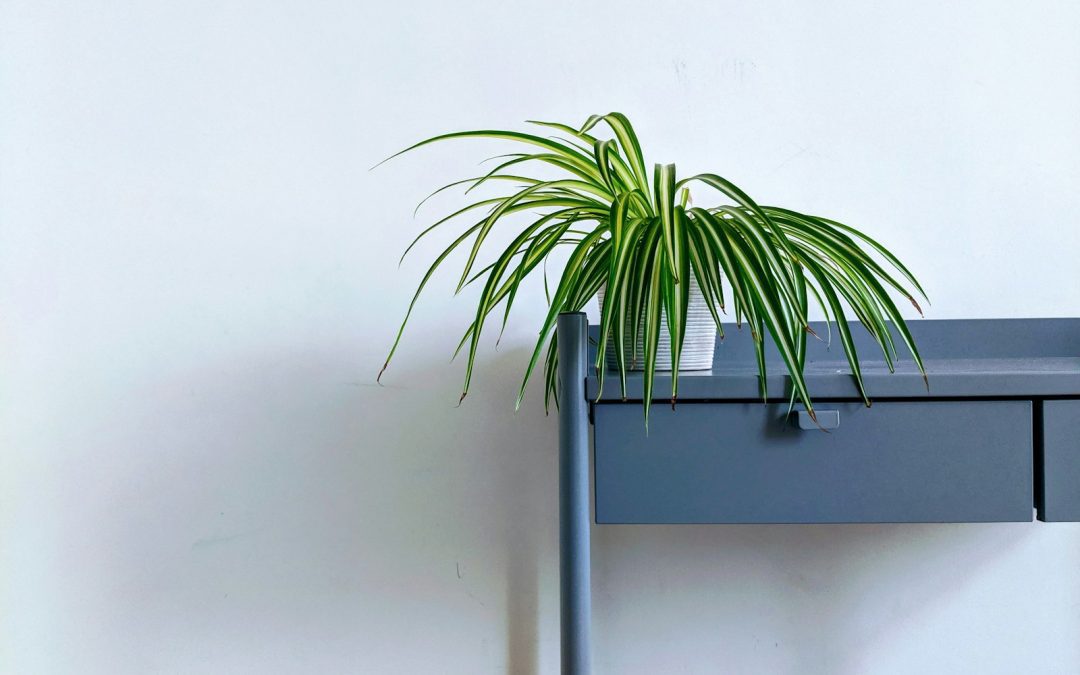Spider plants (Chlorophytum comosum) are among the most popular houseplants due to their ease of care, striking appearance, and air-purifying qualities. This comprehensive guide will delve into everything you need to know about spider plants, from their origins and characteristics to detailed care instructions and the many benefits they offer. Whether you’re a seasoned plant enthusiast or a beginner looking to add some greenery to your home, this guide has you covered.
Contents
Origins and Characteristics of Spider Plants
History and Origin
The spider plant, scientifically known as Chlorophytum comosum, originates from the coastal areas of South Africa. It was first introduced to Europe in the 19th century and quickly gained popularity as a houseplant due to its resilience and adaptability. Its ability to thrive in various environments and its striking appearance have made it a staple in homes and offices worldwide.
Appearance
Spider plants are easily recognizable by their arching, grass-like leaves, which are usually green with a white or yellowish stripe running down the center. The plant gets its common name from the spider-like “pups” or plantlets that dangle from the mother plant on long stems, resembling a spider hanging from a web.
Growth Habit
Spider plants are perennial herbs that grow in a rosette pattern. They can reach up to 12-15 inches in height, with leaves that can extend up to 18 inches long. The plantlets, or offsets, are produced on long, trailing stems, making spider plants particularly attractive when grown in hanging baskets.
How to Care for a Spider Plant
Spider plants are well-known for being low-maintenance, making them an excellent choice for both novice and experienced plant owners. Here’s how to ensure your spider plant thrives:
Light Requirements
Spider plants prefer bright, indirect light but are quite adaptable and can tolerate lower light conditions. However, they may not grow as vigorously in low light, and the variegation on the leaves may fade. Avoid direct sunlight, as it can scorch the leaves, causing them to turn brown.
Watering
One of the key aspects of spider plant care is proper watering. Spider plants like to have their soil kept consistently moist but not soggy. Overwatering can lead to root rot, while underwatering can cause the tips of the leaves to brown. A good rule of thumb is to water the plant when the top inch of soil feels dry to the touch.
Soil and Potting
Spider plants are not particularly fussy about their soil, but they do best in a well-draining potting mix. A standard indoor plant potting mix will work well. When potting or repotting your spider plant, choose a pot with drainage holes to prevent water from accumulating at the bottom, which can cause root rot.
Temperature and Humidity
Spider plants prefer temperatures between 60-75°F (16-24°C), making them well-suited for most indoor environments. They can tolerate temperatures as low as 50°F (10°C), but growth may slow down. Spider plants also appreciate moderate humidity but can adapt to lower levels typically found in homes.
Fertilizing
Fertilize your spider plant once a month during the growing season (spring and summer) with a balanced, water-soluble fertilizer. Over-fertilizing can lead to salt buildup in the soil, which may cause the leaf tips to turn brown. In the fall and winter, when the plant’s growth slows, reduce feeding to once every two months.
Pruning and Grooming
Regularly prune your spider plant to remove any dead or yellowing leaves. This not only keeps the plant looking tidy but also encourages new growth. If your spider plant produces a lot of plantlets, you can remove some to prevent the plant from becoming too heavy and to promote better air circulation.
Propagation of Spider Plants
One of the reasons spider plants are so popular is their ease of propagation. Here’s how you can propagate spider plants and expand your indoor garden:
Propagating from Plantlets
The most common method of propagation is through the plantlets that spider plants naturally produce. Follow these steps to propagate from plantlets:
Identify Healthy Plantlets: Look for plantlets with at least a few small roots already forming.
Cutting the Plantlet: Using clean scissors or pruning shears, cut the plantlet from the mother plant.
Rooting in Water or Soil: You can root the plantlet in water or directly in soil. If rooting in water, place the plantlet in a container with enough water to cover the roots, but not the entire plantlet. If rooting in soil, plant the plantlet in a small pot with moist, well-draining soil.
Planting: Once the plantlet has developed a strong root system (if rooted in water), transplant it into a pot with fresh potting mix.
Propagating from Division
Another method of propagating spider plants is by division. This is done by dividing the root ball of an established plant:
Remove the Plant from the Pot: Gently remove the spider plant from its pot, being careful not to damage the roots.
Divide the Root Ball: Using your hands or a clean knife, divide the root ball into sections. Each section should have a healthy amount of roots and leaves.
Replanting: Plant each section into its own pot with fresh potting mix and water well.
Common Problems and Solutions
Despite being hardy plants, spider plants can encounter a few common issues. Here’s how to identify and solve them:
Brown Leaf Tips
Brown tips are perhaps the most common issue with spider plants. This can be caused by a variety of factors, including overwatering, underwatering, too much direct sunlight, or fluoride in tap water. To prevent brown tips, ensure proper watering practices, use filtered or distilled water, and keep the plant out of direct sunlight.
Yellowing Leaves
Yellowing leaves can be a sign of overwatering or poor drainage. If your spider plant’s leaves are turning yellow, check the soil to ensure it’s not waterlogged and adjust your watering schedule accordingly.
Pests
Spider plants are generally resistant to pests, but they can occasionally attract aphids, spider mites, or scale insects. To treat pests, first, isolate the affected plant to prevent spreading. Wipe the leaves with a damp cloth or spray with a mild insecticidal soap.
Root Rot
Root rot is a severe issue caused by overwatering or poor drainage. Signs include wilting, yellow leaves, and a foul smell from the soil. If you suspect root rot, remove the plant from its pot, trim away any affected roots, and repot in fresh, dry soil.
Benefits of Spider Plants
Spider plants are more than just attractive houseplants; they offer several benefits that can improve your indoor environment:
Air Purification
Spider plants are known for their air-purifying abilities. According to a NASA study, spider plants can remove harmful toxins such as formaldehyde, xylene, and carbon monoxide from the air, making them an excellent choice for improving indoor air quality.
Stress Reduction
Research has shown that having plants like spider plants in your home or workspace can reduce stress, improve concentration, and boost mood. The greenery and oxygen produced by the plants contribute to a more relaxing and productive environment.
Safe for Pets
Unlike many houseplants, spider plants are non-toxic to pets, making them a safe choice for homes with cats and dogs. However, cats are sometimes attracted to the long, arching leaves and may chew on them, so keep an eye on your feline friends.
Low Maintenance
One of the most significant benefits of spider plants is their low maintenance. They can thrive in various conditions and are forgiving if you occasionally forget to water them, making them ideal for busy individuals or those new to gardening.
Conclusion
Spider plants are a fantastic addition to any home, offering aesthetic appeal, easy care, and numerous health benefits. Whether you’re looking to purify your air, add some greenery to your space, or simply enjoy the satisfaction of caring for a living plant, spider plants are an excellent choice.
By following the care tips provided in this guide, you can ensure your spider plant remains healthy and vibrant for years to come. With their ability to propagate easily, you can even share the joy of spider plants with friends and family.


